Part1. This was simply the beginning of the long struggle ahead
Nobember.2011
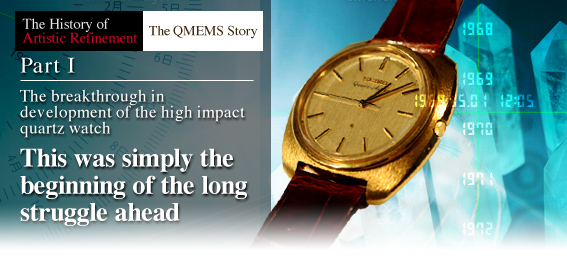
Quartz devices quietly yet continuously mark the passage of time from within the televisions, computers and watches that house them. Quartz devices have grown to become an indispensable fixture within the electronics industry, even being referred to as the ‘salt of industry.’ And the top manufacturer of these vital quartz devices is Epson Toyocom Corporation. ‘QMEMS (Quartz + ‘MEMS’)’ is the name of the unique technology that facilitates the MEMS (Micro Electric Mechanical Systems) microfabrication process for crystal materials, and is the veritable backbone of this company's business. By drawing fully on the strengths of this technology, it has been possible to accomplish both a more compact size and better performance for quartz devices. The origins of QMEMS, a leading-edge technology in today's world, go back to the early 1970's. QMEMS technology arose from more than 30 years of stringent efforts from engineers. Our QMEMS Story, the 'History of Artistic Refinement,' begins firstly with the technology that led to the origin of QMEMS. This article tells the tale of the actions of the engineers that struggled to bring QMEMS to life. This first installment will recount the period immediately following the development of the world's first quartz watch, through to the eve of the development of the technology that became the foundation of QMEMS.
A corporation on Lake Suwa quietly controls the competition
In 1969, on the banks of Lake Suwa in central Japan, a certain event took the world by surprise when a local company quietly succeeded in making the world's first quartz watch a reality, the ‘Seiko Quartz Astron 35Q’ (Figure 1).
This was truly an epoch-making breakthrough. Until then, quartz timepieces, although extremely precise, had been so large that they could not be carried around easily, and instead came in the form of box-shaped clocks for hanging on walls. Although mechanical wristwatches were of course already in existence, but these were not nearly as precise. An innovative solution was needed to resolve the dual issues of better precision and a more compact size, and various corporations around the globe competed ruthlessly from the mid- to late-1960s to find one.
It was Suwa Seikosha Co., Ltd., with its premises on the banks of Lake Suwa, that was quietly controlling this development rivalry. One of the elements enabling Suwa Seikosha to lead its rivals was the company's success in making crystal units more compact. Conventional crystal units had extremely large dimensions and could not be fitted into something as small as a wristwatch (Figure 2). Suwa Seikosha resolved this problem by adopting a new structure known as a ‘tuning fork.’ The dimensions of the newly-developed ‘'Type Cal.35SQ’* crystal unit were 4.3mm diameter x 18.5mm length (Figure 3). Furthermore, Suwa Seikosha was also able to tweak the internal structure of the crystal unit in order to overcome problems caused by constant exposure to vibrations and impacts when the watch is attached to the wearer's wrist.
* Tuning fork crystal units developed by the company at this time were for watches being manufactured in-house at Suwa Seikosha. Accordingly, "we did not give them a particular product model number, and simply referred to them by the name of their movement, or the operating mechanism of the watch (Caliber, or ‘Cal.’)," says Mutsumi Negita.
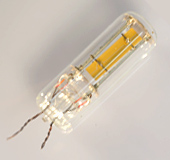
Figure 2: A crystal unit prior to the development of the Quartz Astron
This is an example of the type of crystal unit that was in practical use prior to the arrival of the Quartz Astron. Despite seeming quite large at approximately 50mm long, it was actually one of the smallest crystal units around at that time.
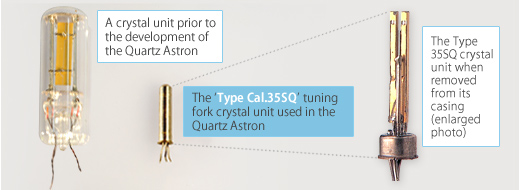
Figure 3: The tuning fork crystal unit used in the Quartz Astron
Adopting the newly-developed tuning fork structure enabled Suwa Seikosha to succeed in creating a much smaller crystal unit with a radius of just 4.3mm and length of 18.5mm. It was assigned the model number ‘Type Cal.35SQ’ and had a normal frequency of 8.192kHz.
The practical application of the world's first quartz watch and the development of the tuning fork crystal unit were the result of the blood, sweat and tears shed by many engineers. However, this was by no means the end of the story. In fact, it was just the beginning of a long hard struggle that continues even to this day.
The engineers had figured out how to make crystal units more compact
There was no time for the engineers to rest on their laurels. Although they had surprised the world by developing the first-ever quartz watch, they knew that it would become a common everyday item as soon as it became commercially viable. End users are constantly desiring better, higher-quality products - a phenomenon that is true even in this day and age.
With the global release of the Quartz Astron the following year (1970), the team that had developed the crystal unit received strict orders from top management to produce an even more compact design. The objective was to improve the product appeal of the company's watches whilst simultaneously developing a quartz watch with superior properties of shock resistance and improved productivity for mass production. Although the Quartz Astron was a groundbreaking new product, its dimensions were still too large in the engineers' opinion. It was determined that quartz watches needed to be made even more compact in order to achieve better acceptance by the market. However, the dimensions of the Type Cal.35SQ crystal unit (4.3mm diameter x 18.5mm length) were too large for any further scaling-down in size for quartz watches, and it was not possible to house the crystal unit within the watch's movement* structure.
* ‘Movement’ refers to the operating mechanism contained within the watch.
The engineers labored on relentlessly until they managed to put their compact tuning fork crystal unit into practical use. Naturally, it would have come as no surprise if someone in the Suwa Seikosha development team had declared that ‘there was no easy way to make crystal units even smaller.’ Still, the development team did not make a single remark in hindsight, but rather, went about taking action immediately.
What was the motivation behind their efforts to push on? Mr. Haruo Takada, an engineer who has been involved in the development of quartz devices since 1972, reflects on those times. ‘Although I personally was not yet involved in the development of crystal units, the development team knew from the start how to go about making them more compact. They knew that they had to increase the oscillating frequency in order to make tuning fork crystal units smaller. The solution was clear once we considered the principle at hand.’
The oscillating frequency of the tuning fork crystal units used in the Quartz Astron was 8.192kHz. Doubling this frequency would result in 1/√2 times the length. In other words, increasing the oscillating frequency to 16.384kHz would result in a reduction in the size of the crystal unit to approximately 0.7 times the original length. Increasing the oscillating frequency in itself was not a difficult task. In fact, quartz clocks in 1970 actually used crystal units with an oscillating frequency of 100k to 200kHz, while broadcasting station facilities were using crystal units in the order of MHz.
The direction for the development team's strategy had been decided. They would double the oscillating frequency and reduce the size of their tuning fork crystal units. There was no doubt that this would facilitate the housing of the crystal unit within the compact quartz watch movement. The development team went about their work triumphantly. However, immediately after, they were confronted with a new and equally difficult challenge.
Saved by the evolution of semiconductor technology
The problem was the increased volume of power being consumed. Increased power consumption meant shorter battery life for the watch. It was self-evident that a quartz watch requiring frequent battery replacements would have poor product appeal. The development team knew it had to find a way to reduce the watch's power consumption.
In fact, the development team had known in principle that ‘increasing the oscillating frequency would increase the power consumption’ prior to becoming involved in the development process. Any power consumed by the crystal unit would increase exponentially by the power of 2 for any increases made to the operating frequency. In other words, doubling the oscillating frequency would result in a four-fold increase in power consumption (as 22 = 4). It became obvious that it was going to require some creative thinking to successfully reduce power consumption. However, there were no other techniques around at that time for reducing the size of the crystal unit.
The development team was baffled. ‘There must be a way.’ In 1971, the sense of stalemate began to make its presence felt. Then, good news arrived from across the seas, with the message that a certain semiconductor manufacturer in the US had developed a new and innovative semiconductor technology.
The development team clung to the news as though it were their last hope. In actual fact, they had gradually come to realize that it was the electronic circuits responsible for functions such as oscillation and clock division that needed to be investigated and analyzed in order to improve the Quartz Astron's power consumption capabilities. The electronic circuits mounted within the Quartz Astron were hybrid circuits that included combinations of bipolar chips. Switching over to the new semiconductor technology could indeed result in a potential reduction in power consumption.
Those in charge of the project immediately flew to the US. Once on foreign soil, they found themselves confronted by a completely new technology.
It was the CMOS integrated circuit (IC) technology. These days, CMOS IC is a fairly commonplace technology, but at that time, it was truly groundbreaking. Power consumption could be drastically reduced in comparison to conventional hybrid circuits that combined bipolar chips. The team's engineers felt immediately that they had found the answer.
Development thereafter proceeded steadily, and they naturally adopted the new semiconductor technology. A reasonable amount of time was spent on technical evaluations. However, no major problems arose to impede development. As a result, during 1971 the team succeeded in developing the smaller ‘Type Cal.38’ tuning fork crystal unit (Figure 4) with oscillating frequency of 16.384kHz and dimensions of 4.3mm diameter x 14.7mm length.
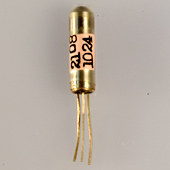
Figure 4: ‘Type Cal.38’ tuning fork crystal unit
A more compact size was achieved by increasing the oscillating frequency to 16.384Hz. Developed in 1971, the new crystal unit had dimensions of 4.3mm diameter x 14.7mm length.
Increasingly compact devices are launched successively around the world.
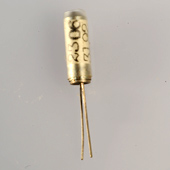
Figure 5: ‘Type Cal.57’ tuning fork crystal unit
By doubling the oscillating frequency of the ‘Type Cal.38’ to the equivalent of 32.768kHz, it became possible to further streamline the dimensions to 3.9mm diameter x 10.9mm length. This product was developed in 1973.
There seemed to be no limit to how small electronic devices could be made, and the same could be said for quartz devices: the smaller they became, the bigger was the demand for ever smaller and more compact devices.
Next, in 1973, the company achieved an even smaller, more compact size by doubling the oscillating frequency as they had before. The oscillating frequency was increased to 32.768kHz, while the dimensions were further streamlined to 3.9mm diameter and 10.9mm length. This heralded the arrival of the ‘Type 57’ crystal unit (Figure 5).
Once again, the problem was that a two-fold increase in oscillating frequency resulted in a four-fold increase in the volume of power consumed. However, this problem was resolved by making improvements to CMOS ICs as well as enhancements to the performance of the battery and motor.
Note that the figure of 32.768kHz is now the oscillating frequency global de facto standard for crystal units used in contemporary clocks and watches. In other words, this figure marks the point at which frequency increases for clock & watch crystal units reached saturation.
Additionally, 1973 marked the release of the ‘F-001’ tuning fork crystal unit, with a new flat shape rather than the traditional cylindrical shape (Figure 6). This new crystal unit was slightly larger than Type Cal.57, with dimensions of 5.1mm × 12.1mm × 2.4mm. However, its innovative shape dramatically simplified attachment (packaging method) to the PCB for mounting electrical components. The conventional cylindrical shape required that the crystal unit be attached to the PCB so that it was perpendicular, necessitating the extra task of bending the metallic terminal and then laying the crystal unit along the PCB. Meanwhile, the new flat design enabled the crystal unit to be attached simply by inserting it into the PCB.
This new design sold like hotcakes and was adopted successively in popular types of smaller wristwatches, as well as in watches with LCD screens. In the case of watches with LCD screens, the electrical circuit had to be housed beneath the LCD panel. Accordingly, the new flat-shaped F-001 crystal unit was adequately equipped to meet such demands.
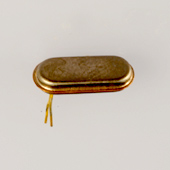
Figure 6: the ‘F-001’ flat-model tuning fork crystal unit
As with ‘Type Cal.57,’ the new tuning fork crystal unit was brought to market in 1973. The flat shape made mounting a breeze in comparison to the conventional cylindrical form. The new crystal unit had dimensions of 5.1mm × 12.1mm × 2.4mm and an oscillating frequency of 32.768kHz.
Everything seemed to be going smoothly...
Development proceeded without any hitches. This is because the engineers were able to achieve new developments in accordance with their vision for future progress. Business was also booming along nicely. Mr. Mutsumi Negita, a quartz device engineer who joined the company in 1974, reflects upon those times, stating that ‘In those days, Suwa Seikosha overwhelmed the competition with its tuning fork crystal units for watches in every facet, from its achievements in compact size and cheaper costs, through to the company’s plentiful product lineup.
All aspects of development and business were thought to be proceeding smoothly. At least, on the surface, things seemed fine… However, the engineers felt troubled by another certain issue at that time, and that issue was soon to become obvious in 1974, just 5 years after the Quartz Astron was first developed.
Katsumi Yamashita (Technical Writer)
(to be continued in the next installment)
interview
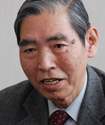 |
Joined Suwa Seikosha Co., Ltd. in 1963. For approximately 28 years, from around 1972 until his retirement in 2000, Mr. Takada was involved in the development of quartz devices. Born and raised in Shinjuku, Tokyo, Mr. Takada cites his ‘unparalleled love of trains’ as his reason for becoming an employee of Suwa Seikosha. "At the time, the main Chuo [train] Line linking Kofu to the Kami-Suwa region had just been electrified. I wanted to ride the trains on that line more than anything, so I relinquished a job offer with an aircraft manufacturer that was almost finalized, and chose Suwa Seikosha in Nagano instead.’ |
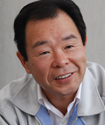 |
Joined Matsushima Industry Co., Ltd., a subsidiary of Suwa Seikosha Co., Ltd. (now known as Seiko Epson Ina Plant) in 1974. Mr. Negita became engaged in the development of quartz devices immediately thereafter, and has continued in this vein for the 37 years ever since. Mr. Negita is currently (as at September, 2011) an instructor for the next generation group of engineers in his role as the Deputy Chief of the TD Production Engineering Department. |
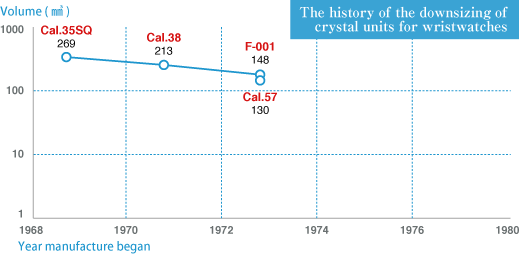
QMEMS is a registered trademark of Seiko Epson Corporation.

